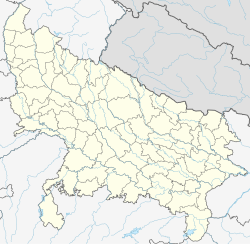This article has multiple issues. Please help improve it or discuss these issues on the talk page . (Learn how and when to remove these messages)
|
Kopaganj Kopa | |
|---|---|
Town | |
| Coordinates: 26°01′N83°34′E / 26.02°N 83.57°E | |
| Country | |
| State | Uttar Pradesh |
| District | Mau |
| Elevation | 66 m (217 ft) |
| Population (2013) | |
• Total | 55,865 |
| Languages | |
| • Official | Hindi |
| Time zone | UTC+5:30 (IST) |
Kopaganj is a town and a nagar panchayat in Mau district in the Indian state of Uttar Pradesh.
